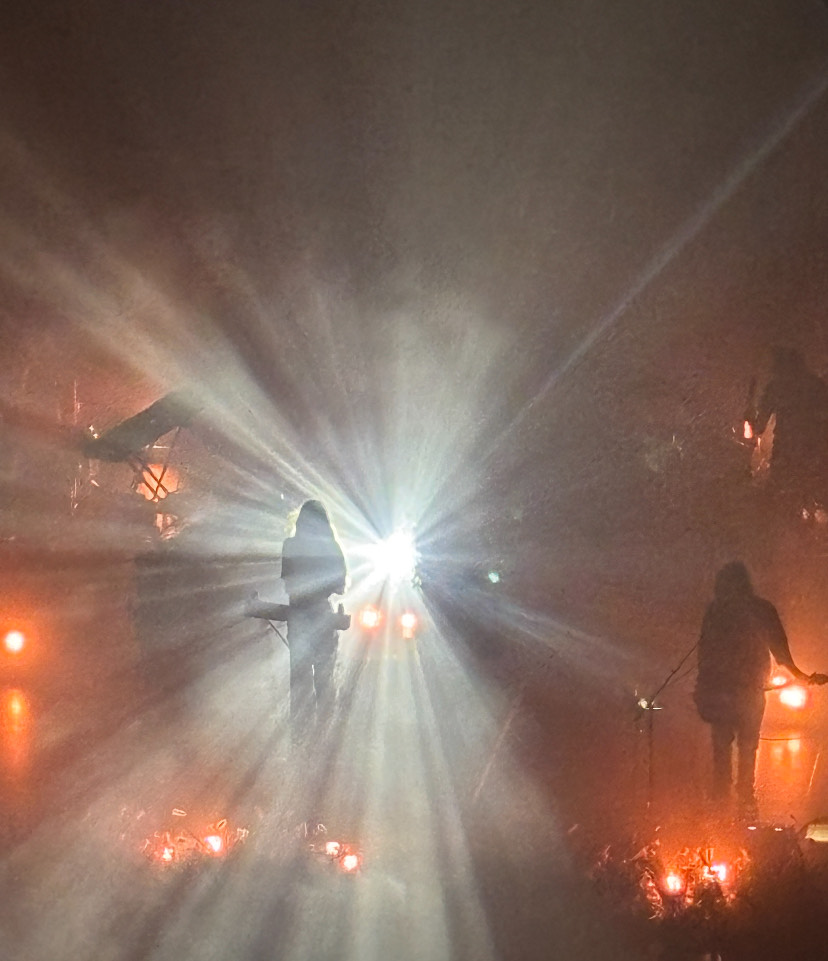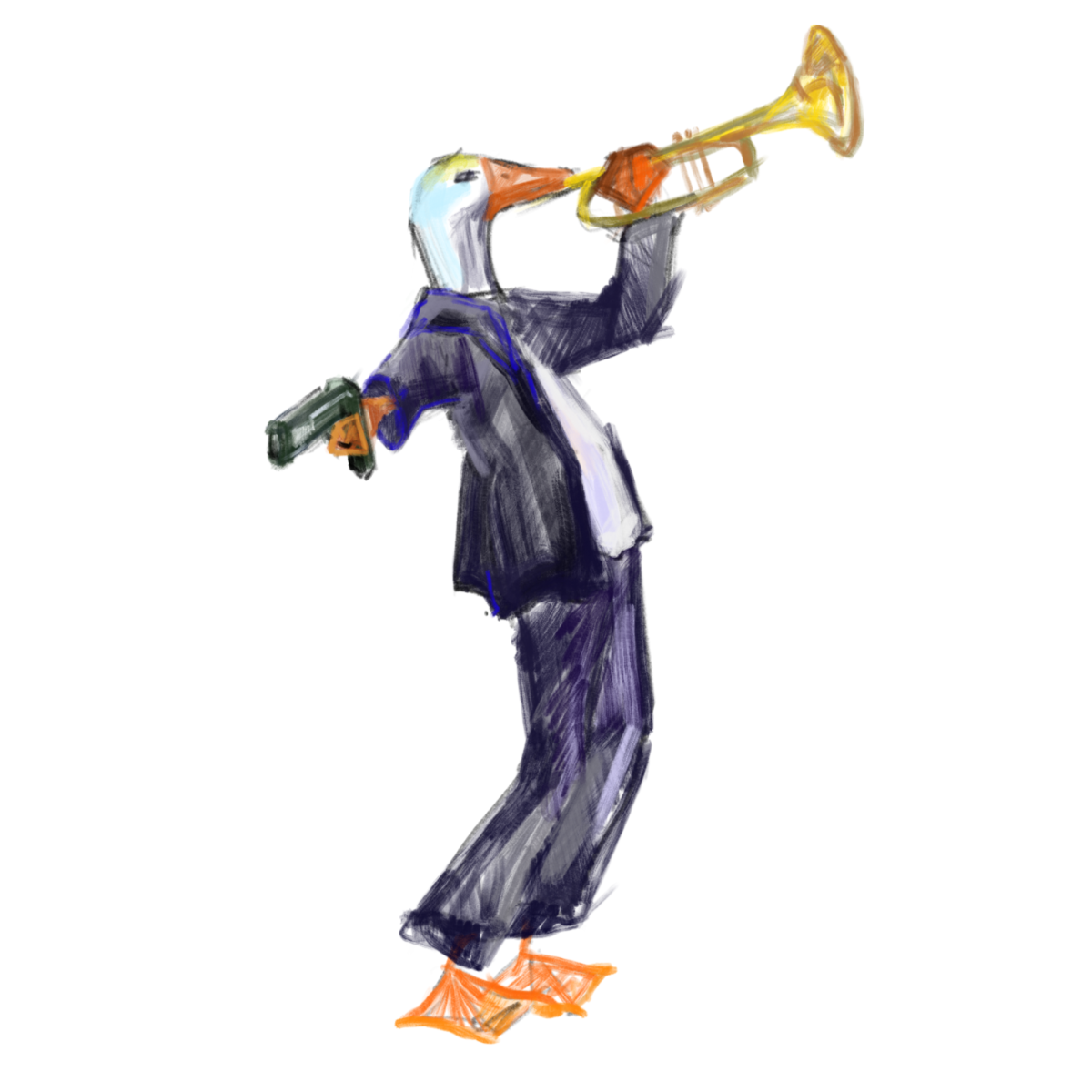
So what’s your brand of art?
That’s a hard one. I’ve dabbled in a lot of different media. At Macalester I’ve mostly taken drawing, painting and printmaking, and now I’m taking a sculpture class. On study away in Mexico, I took installation, painting and drawing classes. My capstone is installation sculpture — but when beginning, I had no formal training in sculpture. So I’ve covered a lot of ground and I don’t necessarily feel like an expert in any of those media, but that’s my way of working.
How did your classes abroad impact you?
My classes in Mexico were really influential, which is interesting because at the time I was really frustrated. I didn’t feel that I had much guidance, just because it’s a very different style of education there. Here you get assignments and critique dates and it’s just a lot more structured, whereas my painting class in Mexico had no assignments, no deadlines, no quota that you had to meet. It was basically just “come in and paint,” and then the professor would give us feedback.
My installation class was also really different. My professor made us go out into the streets and walk around and find impromptu street installations. Oftentimes they were store arrangements or displays, so we would talk to whoever was working there about why they chose to arrange their display in that way. I talked to some guys stocking a truck with boxes, and I was asking why they arranged it in this certain way, and there was actually a logistical reason for it. The installation class did really shape the way I saw my environment. It influenced the project that I’m working on now — I’m taking a lot from construction sites that I saw over the summer. That started from looking at the sites and thinking, “Woah, this is kind of like a massive installation that isn’t in a gallery, or that isn’t meant to be aestheticized in any way, but is actually really interesting.”
Can you talk more about your capstone project?
[Eshaghpour’s capstone piece is a large, multi-part installation sculpture made of plywood, debris netting (as is used in construction), fake grass, plexiglass and moss.]
I’ve never worked on a project for this long before. It’s both rewarding and really challenging, because I had to stick with something for so long that it ended up evolving a lot. The original questions broadened.
It began this summer when I interned at Printed Matter in New York by this massive development that is being built on 34th Street, by the Hudson River. I became really interested in these massive construction materials, in all of the colors and irregular shapes. At first it was a purely visual interest, but then I became really interested in how the natural environment interacted with these construction sites. I started thinking about how we see nature in this country — we cherish nature so much, and we put it on this pedestal of, “Oh, it can’t be touched, it can’t be manipulated.” But from the beginning of time, nature has been manipulated by humans—and animals—in some way or another. Why do we need to manipulate nature? Why do we need to add our touch in order for things to be valuable? If there are things growing somewhere, why is that not enough? Why do we have to add benches and control where nature grows?
That process is really similar to our urban environment — where we build things, what gets knocked down, and how things are repurposed. Sometimes we’ll get rid of things that are functioning perfectly well, and that have a deep sense of history to them. So it’s a question of what we choose to preserve and what we choose to renovate, and to what extent we should renovate and why.
As a senior, you’re probably job-hunting. How do you think making art will be a part of your life after college?
I want to keep making art no matter how it fits into the commercial sector. I want to constantly be surrounded in arts communities. I’m still working out my plans for next year, but Mexico City is hopefully in the running.
What’s the draw of Mexico City?
There’s a really thriving art community there, but it’s different from somewhere like New York, which is more commercial. Mexico has a way lower cost of living, so it’s a place I’ll be able to keep making art. But I also find it culturally to be really, really interesting. It’s a lot warmer of a culture, and people are really willing to talk to you and engage in a way that I haven’t found everywhere. Mexico has a really interesting history of art, too, and they value art in a way that the United States perhaps doesn’t. It’s interwoven into the fabric of their national identity — more people are comfortable talking about art and being around art and seeing it and experiencing it, which I find really cool.
What advice would you give to other students aspiring to be artists?
See as much as you can. Go to galleries and museums. Go to the Walker. Go check out Midway Contemporary Art’s collection in Minneapolis because they have such an incredible resource of books of artists.
Even if you don’t like an artist’s work, that’s good. There have been a lot of things that I’ve seen that at the time I didn’t really understand or didn’t particularly like, but they still stuck with me in some way. The more that you’re exposed to, the more enriched your art becomes.
Be dedicated to making things, even when you’re unsure of yourself. That’s something I’ve struggled with, and still do to some extent. I can get really stuck in feeling like my idea isn’t fully fledged or sophisticated enough or creative enough or unique enough, and it’s really important to not get caught up in all of those doubts, and just start. So much can happen once you do. Just start!







John Roberts • Sep 11, 2019 at 2:43 pm
I got what you intend, appreciate it for posting.
Nicholas Metcalfe • Sep 10, 2019 at 9:03 am
I’m extremely impressed together with your writing skills as neatly as with the format for your weblog. Is that this a paid topic or did you customize it your self? Anyway keep up the nice high quality writing, it’s rare to see a great weblog like this one today..
Karen Mackenzie • Sep 6, 2019 at 7:12 am
Excellent read, I just passed this onto a friend who was doing a little research on that. And he just bought me lunch since I found it for him smile Therefore let me rephrase that: Thanks for lunch!
NativeDeodorantcodes • Jul 30, 2019 at 9:17 am
Has got anyone got any true success from HARO? It merely feels that many of the reporters mounted on the organization actually are from america which do not have much objectives from other places primarily in South Asia. Brian, is it possible to one on one me personally to any case studies? Thanks.
PeterPiperPizza Coupons 2019 • Jul 30, 2019 at 4:57 am
Yes, nice posting but In the first step. You stated promote to people you might have stated inside your post.
Skyzonepromo • Jul 29, 2019 at 7:08 pm
Outstanding article, some numerous effort devote here. The best strategy so far could be the your textual content!
Alana Choen • Jul 23, 2019 at 5:17 am
Mass parsite http://bit.ly/2W9CVkn